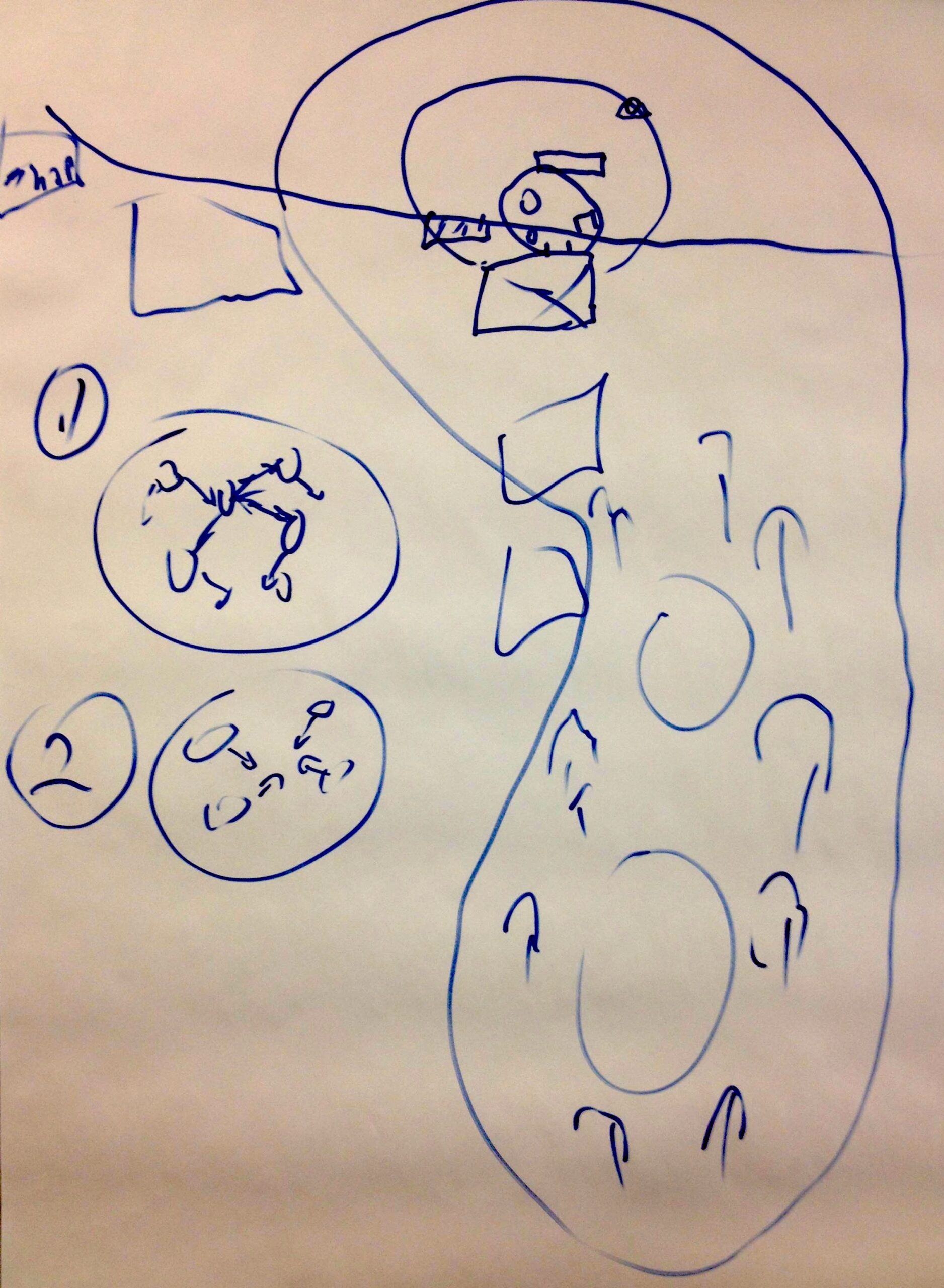
Petr V. Ivanov of the Higher School of Economics shared his experience studying courtyards using a hand-drawn visual.
The courtyard is a luminal space between blocks, and a very transitory space. When people are asked ‘What are the boundaries to your courtyard?’ it became a puzzling, complicated question for many.
Moscow is perhaps defined by place-based community, where community members are not spatially blind but do react to the things going on in their neighborhood. They perceive themselves as a subject when there is something happening to their housing. Place-based community as catastrophe community. (Relationship of catastrophe to thresholds).The courtyard is an outcome of historical and political processes.
Here are some of the main takeaways from his presentation, which focused on people’s perceptions of boundaries and borders of courtyards in Moscow:
- Perceptions of even the most basic borders can differ quite widely depending on how people use space.
- People are aware and are more connected to the shared space than to one another
- There are borders to the ‘idea’ of community.
- People overcome these and personal boundaries when there is a pressing issue affecting them as a whole, like building a shopping mall or a highway, or deforestation.
- Courtyards highlight the borders of inclusion and of exclusion, like between people and authority or different groups of people.
- Walks and interviews are a way of observing spatial behaviors and recognizing individual boundaries through changes in people’s behavior in different spaces. For example, some people perceive the areas on the side of a building negatively and will avoid it, based on a personal fear or experience.